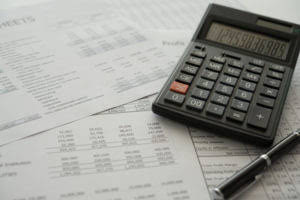
A manufacturing company initially purchased individual components from different vendors and assembled them in-house. As the company decided to assemble the components themselves, they found that the costs of managing the assembly line and the transportation were increasing significantly. As employees use Clockify to clock in and out, employers gain insights into the total number of hours each employee worked on each production line. The opportunity to achieve a lower per-item fixed cost motivates many businesses to continue expanding production up to total capacity.
As the manufacturing process involves raw materials and finished goods, all of these are considered assets. The materials that are yet to be assembled /processed nonmanufacturing costs include and sold are considered work-in-process or work-in-progress (WIP) inventory. Material costs are the costs of raw materials used in manufacturing the product.
4 Compare and Contrast Traditional and Activity-Based Costing Systems
This allows the business to achieve a higher profit margin after considering all variable costs. As the rate of production increases, the company’s revenue increases while its fixed costs remain steady. Therefore, the per-item cost of manufacturing falls and the business becomes more profitable. Manufacturing businesses calculate their overall expenses in terms of the cost of production per item. That number is, of course, critical to setting the wholesale price of the item.
- The materials that are yet to be assembled /processed and sold are considered work-in-process or work-in-progress (WIP) inventory.
- As the manufacturing process involves raw materials and finished goods, all of these are considered assets.
- Figure 2.3.1 shows examples of production activities at Custom Furniture Company for each of the three categories.
- “When a manufacturer begins the production process, the costs incurred to create the products are initially recorded as assets in the form of WIP inventory.
- The sales price of each table varies significantly, from $1,000 to more than $30,000.
Each of them requires a different set of cost control measures, making appropriate cost categorization even more essential. Miscellaneous expenses are small transactions that do not fit within the ledgers’ specified accounts. Miscellaneous expenses, meaning costs that don’t fall into a specific tax category, must be recorded and accounted for in your business’s general ledger account. If your items under miscellaneous expenses increase in size and usage, then the miscellaneous expense should be given its own account. Another commonly used term for manufacturing costs is product costs, which also refer to the costs of manufacturing a product. For instance, if the manufacturing costs are too high, these costs can create a dent in the company’s profit.
Introduction to Manufacturing Overhead
As mentioned above, nonmanufacturing costs cannot be included in inventory or the cost of goods sold; rather, nonmanufacturing costs are reported as SG&A expenses and Interest Expense in the accounting period in which they occur. To help clarify which costs are included in these three categories, let’s look at a furniture company that specializes in building custom wood tables called Custom Furniture Company. Each table is unique and built to customer specifications for use in homes (coffee tables and dining room tables) and offices (boardroom and meeting room tables). The sales price of each table varies significantly, from $1,000 to more than $30,000. Figure 2.3.1 shows examples of production activities at Custom Furniture Company for each of the three categories.

You can’t deduct legal and other fees related to buying a capital property, but you can add these fees to your property cost. In case you’re spending too many resources on a task or project, the option to set budgets in Clockify will give you a detailed insight into how you can better balance those resources. Effectively managing expenses in manufacturing isn’t just an option — it’s a necessity.
Нет Ответов